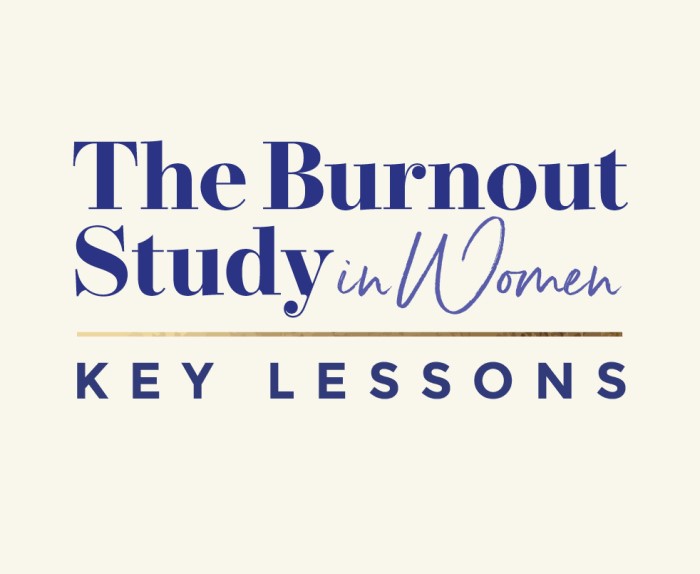Have you decided if you’re vaccinating your kids for COVID?
If you haven’t – or if you have but still have concerns – then today’s TrueveLab Report is for you.
Because ALL of those feelings, concerns, and questions are FAIR.
I know that you don’t want me to give over-simplified or generic reassurance. So, it’s MY goal to help you understand the information AND the context, so that you can make the very best decision for your family.
Let’s be clear on one thing – when it comes to vaccines in children, we have to have a VERY high threshold of safety and efficacy. Because we’re talking about our kiddos. I don’t take that lightly.
What goes into the decision (and what you’ll read in this post):
- Description of the study done
- Safety
- Efficacy
- The 3-factor way I suggest every family make this decision
Let’s dive in. Qs? Send them my way 0r reply to this email.
What was the Study?
Pfizer’s Phase 2/3 Trial had two stages, totaling 3,000 children ages 5-11 vaccinated at the 10 microgram dose (of note, everyone ages 12 and up gets a 30 microgram dose):
- Initial group of 2268 children
- 1518 received vaccine, 750 placebo
- Monitoring: 95.1% of participants had safety follow-up of greater than or equal to 2 months after dose 2.
- Safety Expansion group of 2379 children
- 1500 received vaccine
- Monitored for adverse effects for at least 2 weeks after Dose 2.
- This was done at the request of the FDA, to allow for better investigation of serious adverse events.
Safety
We’ll start here – because this is what WORRIES you at night. What’s important here is to compare the risk of an event from COVID, against the risk of it from the vaccine. Overall, this study showed that children ages 5-11 had FEWER systemic effects than ages 12-17. Since you know I’m obsessed with keeping everything within context, I’ve put this in a table comparing the risk for the vaccine to the actual COVID infection (in an unvaccinated person).
Local Reactions
Related to COVID infection in unvaccinated person
Related to COVID vaccine
Local Reaction to Shot
N/A
- 75% mild or moderate pain (vs 30% placebo)
- 15-18% redness (vs 6% placebo)
This is the least concerning area (since most of these can be fixed with a bandaid, popsicle, and a little bit of time). 75% of participants had mild or moderate pain at the injection site, which was significantly higher than placebo (30%). The most common local reaction was redness, and pain was more likely to be mild.
Systemic Effects
Lymphadenopathy (ie swollen lymph nodes): 13 participants in the vaccine group vs 1 in the placebo had lymphadenopathy, but this was self-limited, lasting an average of 4.7 days.
Other systemic effects were milder in the 5-11 age range than in the 16-25-year-olds. And headaches were actually more common in the placebo group. The most common symptoms were fatigue and headache, and typically were mild and resolved within 1-2 days.
- Fever – 2.5% in vaccinated 5-11 yo vs 7.3% in 16-25 yo
- Fatigue – 33.6% in vaccinated 5-11 yo vs 59.9%in 16-25 yo.
- Headache – 22.4% in vaccinated 5-11 yo vs 53.9% in 16-25 yo. (vs 24.1% in placebo)
- Chills – 4.6% in vaccinated 5-11 yo vs 25% in 16-25 yo.
- Muscle pain – 9.1% in vaccinated 5-11 yo vs 26.9% in 16-25 yo.
Angioedema / rash – these were mild, limited, and did not prevent children from receiving their 2nd dose (one child with angioedema after the 1st dose, was able to receive the second without any symptoms).
SERIOUS Adverse Events
Myocarditis
COVID Infection
COVID Vaccine
Myocarditis
133 / 100,000 infections
< 1 / 100,000 vaccinations
DEFINITION: Myocarditis is inflammation of the heart – which has received much of the media attention. Depending on the case, the severity can vary from mild and self-limited to severe and life-threatening. I was worried about this, too (personally, as someone who has separately suffered from myocarditis). So, I dug in extra-deep here. I hope you find the extra details helpful!
Myocarditis due to COVID Infection
We know that COVID significantly increases risk of myocarditis – in fact, a COVID infection makes someone 37 more likely to develop myocarditis, with an incidence rate of 133 myocarditis cases / 100,000 infections, according to this MMWR.
Myocarditis due to COVID Vaccine
- What the Pfizer Study Showed: In the 5-11 age range, based on the Pfizer study (3,000 children vaccinated, who have been monitored for a minimum of 2 weeks, and 1500 of them for over 2-3 months), there were no cases of myocarditis. That’s reassuring – but since myocarditis is still relatively rare after vaccines, you could argue that we just didn’t see myocarditis for that reason. That’s fair.
- What we’ve seen in other age groups: We can look to the 12-17 age group – where 13.6 MILLION children have been vaccinated. (THIS was REALLY reassuring to me, particularly since we also know that systemic effects were also less common in the 5-11 age group than 12-17 age range).
- According to this MMWR, looking at 12-17-year-olds who were vaccinated and VAERS reports up through July 16, 2021, there was a 4.3% report of myocarditis, leading to an incidence rate of 4.46 cases of myocarditis out of 100,000 vaccinated. We went into VAERS ourselves, and adding in any other reports up to 10/29/2021, found an estimated incidence rate of 4.24 cases / 100,000.
- Even more reassuring – CONTEXT MATTERS here! If you look at the baseline myocarditis incidence in this age range (meaning how many cases of myocarditis would you expect in this age group if we did NOTHING to them, that would be 6 cases / 100,000, according to this study. So, 4.24 with the vaccination, 3.6 without it. We don’t have enough data to know if this difference is even significant, but we can pretty safely say that the vaccine adds less than 1 case of myocarditis out of 100,000 vaccinated.
- Also of note – myocarditis after COVID vaccine is most commonly mild and self-limited, per this report, unlike the fulminant myocarditis we typically see due to other causes. Looking at data out of Israel, the cases of myocarditis were highest in males ages 16-29; in that group, they saw of all cases of myocarditis, which were 10 / 100,000, 76% of cases have been mild, 22% intermediate, with 1 case of cardiogenic shock. There have been no vaccine-induced myocarditis cases found by the CDC. Not to say that anyone would even want a mild myocarditis, but still a small bit of reassurance.
- Expected onset of vaccine-induced myocarditis: When would you expect it? Onset of myocarditis is typically in the first week after vaccine, with many noted within 1-2 days after the 2nd dose
MIS-C
COVID Infection
COVID Vaccine
MIS-C
6 / 10,000 infections
0
DEFINITION: MIS-C is an inflammatory condition in children where the immune system over-reacts, potentially causing damage to the heart, lungs, brain, and other organs. It’s become a special concern due to COVID infections.
MIS-C in COVID has been highest in the age group of 5-11 year olds, with over 5,000 cases to date. 60-70% of children with MIS-C are admitted to the ICU, with a 1-2% death rate.
Long COVID
COVID Infection
COVID Vaccine
Long COVID
Around 7- 14% (?) – this is still very much an unknown
?
This is an area with many unknowns, particularly in the pediatric population, and warrants continued monitoring, as well as better understanding of the overall impact of COVID on our lives and mental health, as well as physical health.
Hospitalizations
COVID Infection
COVID Vaccine
According to COVID-NET, there have been over 8,000 hospitalizations for COVID in children ages 5-11, with 1/3 of those spending time in the ICU. Of note, 30% did NOT have an underlying medical condition. Also, these hospitalizations were at a time when we were masking and doing other mitigation measures – we find only 9 hospitalizations for the flu during the same season – meaning that without these measures, hospitalizations would likely have been far higher.
Death
COVID Infection
COVID Vaccine
Death
0.01% – 0.03%
0
The death rate for children ages 5-11 from COVID is approximately 0.01-0.03%, meaning somewhere between 1-3 deaths / 10,000 children infected. That may not sound extremely high, which is why death is not the only metric to consider.
Other Severe Adverse Events
Pfizer monitored for a number of additional adverse events, and reassuringly, there were no cases of anaphylaxis, anaphylactic/anaphylactoid reactions, myocarditis/pericarditis, Bell’s palsy, or appendicitis were reported in the clinical trial of 5 to less than 12-year-olds up to the data cutoff date. Additionally, no cases of thrombocytopenic events, thromboembolic, intravascular coagulation events, autoimmune or demyelination events, meningitis, encephalitis, neuritis, Kawasaki disease, MIS-C, or acute respiratory distress syndrome were reported.
Serious Adverse Events, Overall
Overall, there were 5 total Serious Adverse Events in all 3,000 children, but none found to be related to the vaccine. These were a case of a broken bone (2 in vaccine and 1 in placebo), an infected joint (in vaccine group), and a child swallowing a penny (in vaccine group).
Efficacy
But – does it WORK? Two pieces of data help us here.
Antibody Levels: while testing antibodies is an imperfect way to test for immunity for COVID, it’s often used as a proxy. In this case, we saw that 1 month after dose 2, immune responses generated with the lower dose were similar to older children and adults given the 30 microgram dose. Additionally, they noted that high neutralizing antibody levels were also generated against the delta variant.
Actual infections: Pfizer also noted the rate of infections in children who had previously not had COVID, and found that 6 out of 1273 vaccinated showed COVID infection, vs. 16 out of the 663 in placebo – translating to a 90% vaccine efficacy.
How to make this decision for your family
Taking ALL of the above into consideration, I created the following 3-factor list below. If you say “YES” to any of these, then vaccinating your child makes sense.
- Medical risk of COVID to your child
- For children with obesity or chronic medical problems. If your child falls into this category, then the risks of COVID are especially high in them – and warrant vaccination.
- For children without chronic medical problems, other risks still exist, like that of myocarditis, MIS-C, and even Long-COVID– so we have to balance that into our decision. Plus, remember that 30% of children hospitalized for COVID have no chronic conditions at all – and I would argue that the risks of a vaccine are less than the potential risk to a child of having a long hospitalization.
- Medical risk of COVID to someone in your family
- Does your child interact or live with someone who is medically fragile? Say, a grandparent, an ill parent, or younger sibling? In this case, I’d argue that the loss of that loved one to the child would out-weigh the risk to them of getting vaccinated.
- Social benefits
- We can’t discount that COVID, anxiety about COVID, limitations to activities, and masking all have some mental impact on our children. So does the ability to have normal holidays again! If that includes various relatives, then vaccinating your child can help do that with confidence– which is good for EVERYONE’s mental health.
- If your child will be able to resume activities more readily without masking and with fewer limitations as a result of the vaccination, that in itself is also a valid motivation to to vaccinate, given the safety profile of the vaccine.
What I'm Doing
I initially was worried – as many of you know, I developed a myocarditis last year (felt to be due to a respiratory infection – it started BEFORE I had the vaccine).
So, this decision – and helping you make your own – was PERSONAL.
What I’ve found most reassuring was seeing that over 13 MILLION children ages 12-17 have received the COVID vaccine, and signals of risk have only lowered. That gave me the confidence I needed (plus all the information above) to choose to vaccinate our daughter (since our son is still too young).
If you feel better waiting a couple of weeks, until after you’ve seen more kiddos get the vaccine, I wont try to argue with you. Conditions like myocarditis occur in the first week, often within 24-48 hours. But remember – it will take your child 2 doses, each spaced 21 days apart, to have immunity. So, if you’re wanting peace of mind for the holidays, or for the start of school in January, you’d want to start the process by early December.
We’re ready to get back to normal.
Questions? Concerns? What are YOU planning to do?
All my love,
- Dr. Darria
P.S. What other Q’s do you have for the TrueveLab? Submit them here for us to answer in future TrueveLab Reports!








